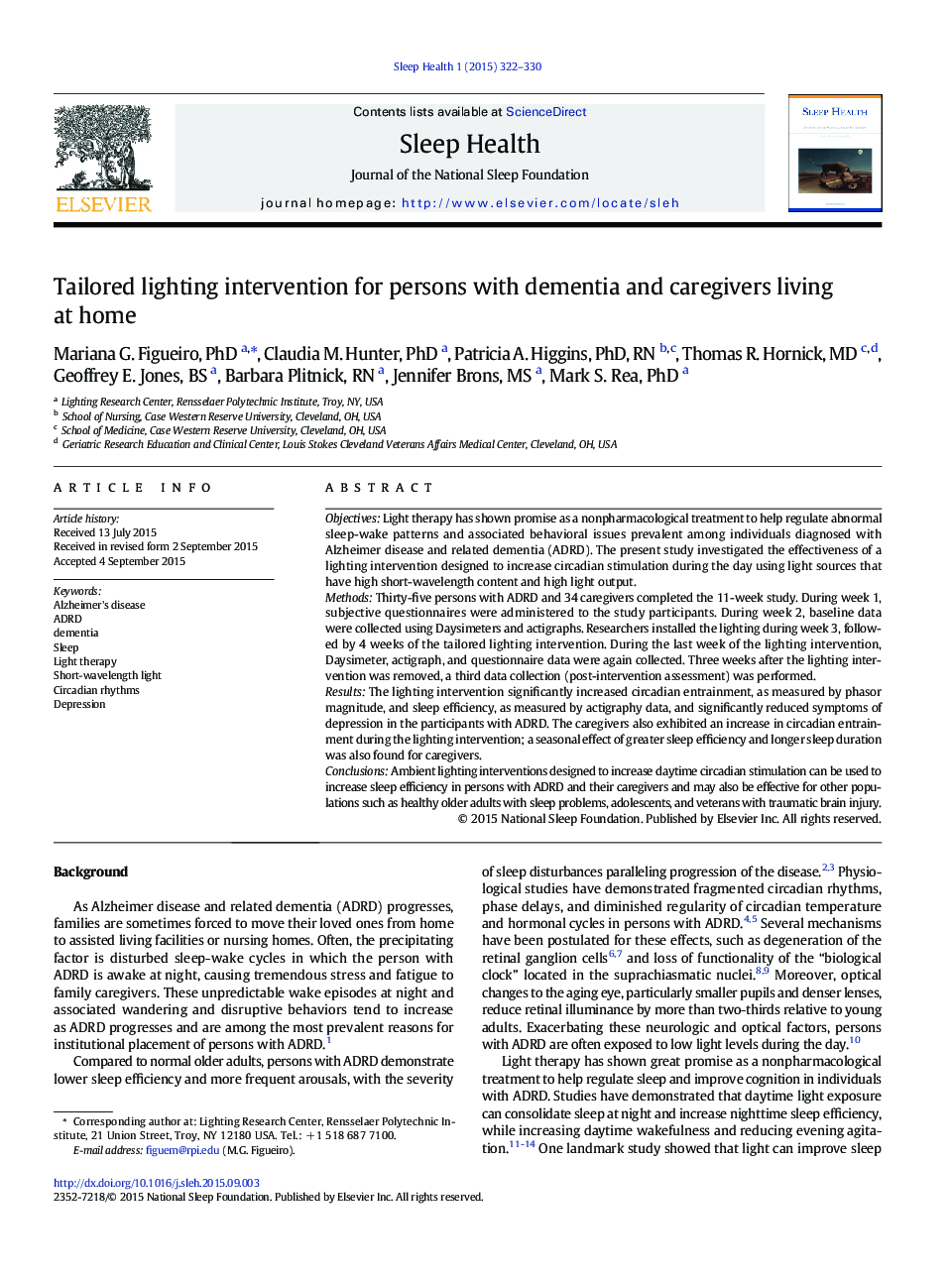| Article ID | Journal | Published Year | Pages | File Type |
|---|---|---|---|---|
| 916294 | Sleep Health | 2015 | 9 Pages |
ObjectivesLight therapy has shown promise as a nonpharmacological treatment to help regulate abnormal sleep-wake patterns and associated behavioral issues prevalent among individuals diagnosed with Alzheimer disease and related dementia (ADRD). The present study investigated the effectiveness of a lighting intervention designed to increase circadian stimulation during the day using light sources that have high short-wavelength content and high light output.MethodsThirty-five persons with ADRD and 34 caregivers completed the 11-week study. During week 1, subjective questionnaires were administered to the study participants. During week 2, baseline data were collected using Daysimeters and actigraphs. Researchers installed the lighting during week 3, followed by 4 weeks of the tailored lighting intervention. During the last week of the lighting intervention, Daysimeter, actigraph, and questionnaire data were again collected. Three weeks after the lighting intervention was removed, a third data collection (post-intervention assessment) was performed.ResultsThe lighting intervention significantly increased circadian entrainment, as measured by phasor magnitude, and sleep efficiency, as measured by actigraphy data, and significantly reduced symptoms of depression in the participants with ADRD. The caregivers also exhibited an increase in circadian entrainment during the lighting intervention; a seasonal effect of greater sleep efficiency and longer sleep duration was also found for caregivers.ConclusionsAmbient lighting interventions designed to increase daytime circadian stimulation can be used to increase sleep efficiency in persons with ADRD and their caregivers and may also be effective for other populations such as healthy older adults with sleep problems, adolescents, and veterans with traumatic brain injury.
